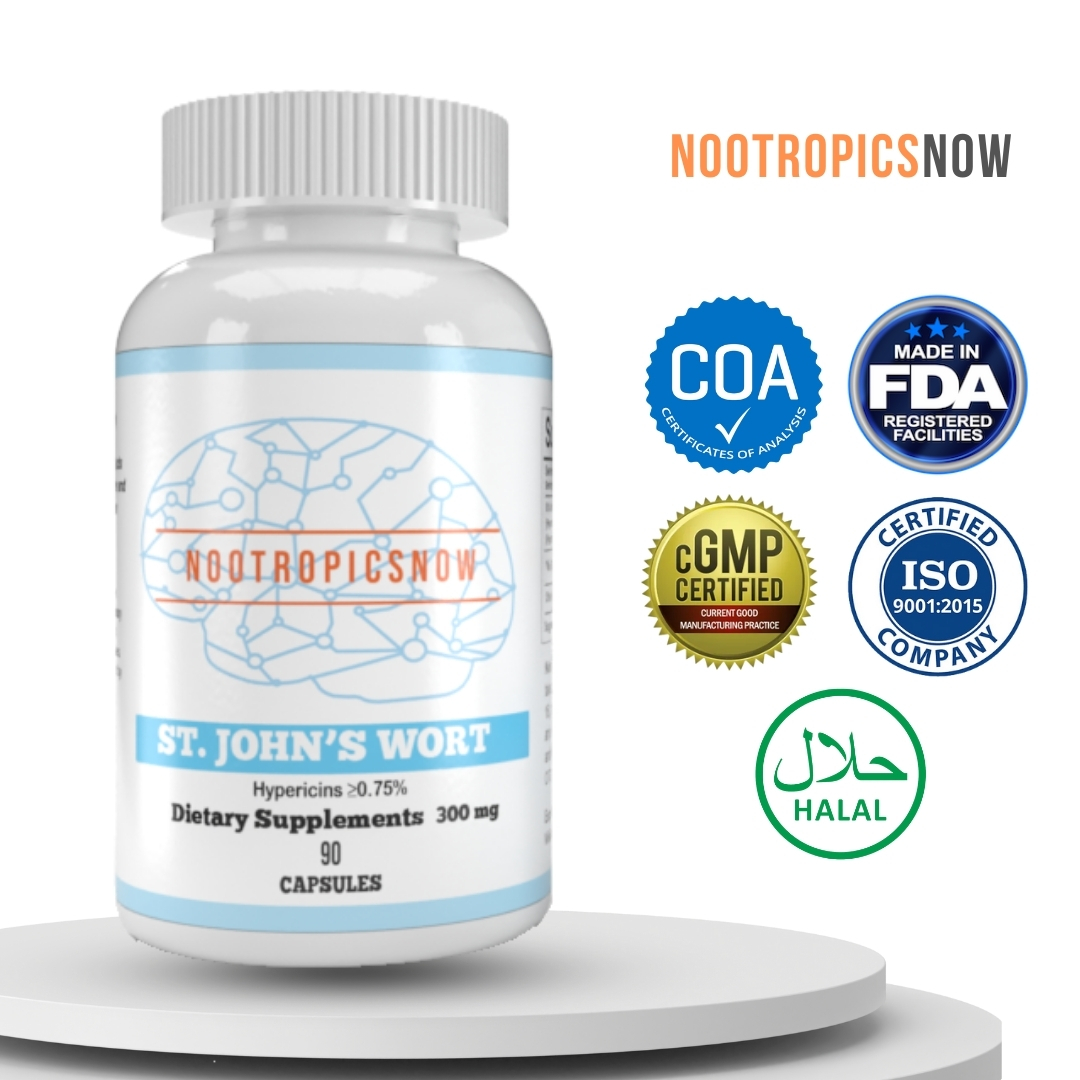Atomoxetine Effects: What You Need to Know

Atomoxetine Effects: A Comprehensive Guide
Atomoxetine, marketed primarily under the brand name Strattera, represents a non-stimulant medication used in the treatment of Attention Deficit Hyperactivity Disorder (ADHD). Unlike stimulant medications traditionally used for ADHD, atomoxetine operates by selectively inhibiting the reuptake of norepinephrine, a neurotransmitter vital for attention and impulse control. Therefore, it is crucial to understand atomoxetine effects. This article provides a comprehensive guide to the effects of atomoxetine, including its benefits, potential side effects, interactions, and precautions, assisting individuals and healthcare professionals in making informed decisions.
How Atomoxetine Works
Atomoxetine is a selective norepinephrine reuptake inhibitor (SNRI). Subsequently, it increases the levels of norepinephrine in the synaptic cleft, the space between nerve cells. Norepinephrine is essential for regulating attention, focus, and impulse control. By increasing the availability of norepinephrine, atomoxetine can improve these functions in individuals with ADHD. Unlike stimulants, atomoxetine does not significantly affect dopamine levels, another neurotransmitter associated with reward and pleasure, resulting in a lower potential for abuse.
Mechanism of Action

The precise mechanism by which atomoxetine exerts its therapeutic effects is complex and not fully understood. However, it primarily involves blocking the norepinephrine transporter (NET), which is responsible for removing norepinephrine from the synapse. This leads to increased norepinephrine levels, enhancing the signaling between neurons and improving attention and impulse control.
Differences from Stimulant Medications
Stimulant medications, such as methylphenidate (Ritalin) and amphetamine (Adderall), work primarily by increasing dopamine and norepinephrine levels in the brain. They typically provide more immediate effects than atomoxetine, but also carry a higher risk of side effects and potential for abuse. Atomoxetine, being a non-stimulant, often takes longer to reach its full therapeutic effect, usually several weeks, but offers a lower risk of dependence. Also, remember to seek advice from a healthcare professional.
Benefits of Atomoxetine
Atomoxetine offers several benefits for individuals with ADHD, providing improvements in various aspects of daily life and cognitive function.
Improved Attention and Focus
A primary benefit of atomoxetine is its ability to enhance attention and focus. By increasing norepinephrine levels, the medication helps individuals concentrate better, stay on task, and resist distractions. This improvement can be particularly beneficial for academic performance, work productivity, and everyday activities requiring sustained attention.
To help with focus and memory, consider supplements like:

View Product
Reduced Hyperactivity and Impulsivity
Atomoxetine can also reduce hyperactivity and impulsivity, core symptoms of ADHD. This reduction can lead to decreased restlessness, fidgeting, and impulsive decision-making. For children, this can translate to improved behavior in school and at home. For adults, it can enhance self-control and reduce impulsive behaviors that may negatively impact relationships and work.
Sustained Relief Throughout the Day
Unlike some stimulant medications that provide short-term relief, atomoxetine offers sustained effects throughout the day. This can be particularly advantageous for individuals who need consistent symptom control from morning to evening. The extended release formulation allows for once-daily dosing, improving convenience and adherence.
Lower Risk of Abuse
Due to its non-stimulant nature, atomoxetine carries a lower risk of abuse compared to stimulant medications. This makes it a safer option for individuals with a history of substance abuse or those concerned about the potential for misuse. Families with adolescents or young adults who have a history of substance use may find atomoxetine a suitable alternative.
Improvement in Emotional Regulation
Some individuals with ADHD experience difficulties with emotional regulation, leading to mood swings, irritability, and frustration. Atomoxetine has been shown to improve emotional regulation by stabilizing mood and reducing emotional reactivity. This can result in better interpersonal relationships and an enhanced overall quality of life.
If emotional regulation is an area of concern, supplements such as 5-HTP may be beneficial:

View Product
Potential Side Effects
While atomoxetine offers significant benefits, it is essential to be aware of potential side effects. These side effects can vary in severity and frequency, and not everyone experiences them.
Common Side Effects in Children and Adolescents
The common side effects observed in children and adolescents taking atomoxetine include:
Common Side Effects in Adults
Adults taking atomoxetine may experience the following common side effects:
Rare But Serious Side Effects
Although rare, some serious side effects require immediate medical attention:
Interactions with Other Medications
Atomoxetine can interact with several medications, potentially altering its effects or increasing the risk of side effects. Therefore, it is important to inform your doctor about all medications, supplements, and herbal products you are taking.
MAO Inhibitors (MAOIs)
Atomoxetine should not be used with MAOIs or within 14 days of stopping an MAOI. Combining these medications can lead to severe and potentially life-threatening side effects, including high blood pressure, fever, muscle rigidity, and mental status changes.
CYP2D6 Inhibitors
Atomoxetine is primarily metabolized by the CYP2D6 enzyme in the liver. Medications that inhibit this enzyme, such as fluoxetine (Prozac), paroxetine (Paxil), and quinidine, can increase atomoxetine levels in the body, leading to an increased risk of side effects. Dosage adjustments may be necessary when atomoxetine is used with these inhibitors.
Albuterol
Combining atomoxetine with albuterol, a medication used to treat asthma and other respiratory conditions, can increase the risk of cardiovascular side effects, such as increased heart rate and blood pressure. Monitor heart rate and blood pressure closely when using these medications together.
Blood Pressure Medications
Atomoxetine can affect blood pressure, so it’s important to use caution when taking it with blood pressure medications. Regular monitoring of blood pressure is advisable, and dosage adjustments may be needed.
Precautions and Warnings
Before starting atomoxetine, certain precautions and warnings should be considered.
Pre-Existing Medical Conditions
Individuals with pre-existing medical conditions, such as heart problems, high blood pressure, liver disease, or mental health disorders, should use atomoxetine with caution. Regular monitoring by a healthcare provider is essential to ensure safety.
Monitoring Growth in Children
Atomoxetine can affect growth in children, so regular monitoring of height and weight is important. If growth is significantly slowed, the doctor may consider adjusting the dosage or exploring alternative treatments.
Pregnancy and Breastfeeding
The safety of atomoxetine during pregnancy and breastfeeding is not fully established. Pregnant or breastfeeding women should discuss the risks and benefits with their doctor before using atomoxetine.
Mental Health Monitoring
Individuals with a history of mental health disorders, such as depression or anxiety, should be closely monitored for changes in mood or behavior while taking atomoxetine. Report any concerning symptoms to the prescribing doctor.
To further promote a sense of calm and well-being, some find St. John’s Wort beneficial:

View Product
Driving and Operating Machinery
Atomoxetine can cause dizziness or drowsiness in some individuals, which may impair their ability to drive or operate machinery. Use caution when performing tasks that require alertness until you know how atomoxetine affects you.
Dosage and Administration
The dosage of atomoxetine is typically based on body weight and is adjusted by the doctor based on individual response and tolerance.
Initial Dosage
The initial dosage of atomoxetine for children and adolescents is usually 0.5 mg/kg per day, while the initial dosage for adults is typically 40 mg per day.
Titration
The dosage may be gradually increased over several weeks to achieve the desired therapeutic effect. The maximum recommended daily dose is 1.4 mg/kg for children and adolescents and 100 mg for adults.
Administration
Atomoxetine can be taken once daily in the morning or divided into two doses, taken in the morning and evening. It can be taken with or without food.
Missed Dose
If a dose is missed, take it as soon as you remember. However, if it is close to the time for your next dose, skip the missed dose and continue with your regular dosing schedule. Do not double the dose to make up for a missed one.
Long-Term Use
Long-term use of atomoxetine is often necessary to maintain symptom control in individuals with ADHD.
Monitoring
Regular monitoring by a healthcare provider is essential to assess the effectiveness of atomoxetine, monitor for side effects, and adjust the dosage as needed.
Benefits
Long-term benefits of atomoxetine include sustained improvement in attention, focus, and impulse control, leading to better academic and work performance, improved relationships, and enhanced overall quality of life.
Potential Risks
Potential risks associated with long-term use of atomoxetine include slowed growth in children, increased risk of cardiovascular problems, and changes in mental health.
Alternatives to Atomoxetine
If atomoxetine is not effective or well-tolerated, there are several alternative treatment options for ADHD.
Stimulant Medications
Stimulant medications, such as methylphenidate (Ritalin) and amphetamine (Adderall), are often the first-line treatment for ADHD. They work by increasing dopamine and norepinephrine levels in the brain and can provide significant symptom relief.
Other Non-Stimulant Medications
Other non-stimulant medications, such as guanfacine (Intuniv) and clonidine (Kapvay), are alpha-2 adrenergic agonists that can improve attention and reduce hyperactivity. They are often used in combination with stimulants or as an alternative for individuals who cannot tolerate stimulants.
Behavioral Therapy
Behavioral therapy, such as cognitive-behavioral therapy (CBT), can help individuals with ADHD develop strategies for managing their symptoms, improving their organizational skills, and enhancing their emotional regulation.
Lifestyle Modifications
Lifestyle modifications, such as regular exercise, a healthy diet, and sufficient sleep, can also play a significant role in managing ADHD symptoms.
Conclusion
Atomoxetine is a non-stimulant medication that offers a valuable treatment option for individuals with ADHD. By selectively inhibiting the reuptake of norepinephrine, it can improve attention, focus, and impulse control. While atomoxetine offers significant benefits, it is essential to be aware of potential side effects, interactions, and precautions. Regular monitoring by a healthcare provider is crucial to ensure safe and effective use. By understanding the effects of atomoxetine and exploring alternative treatment options, individuals with ADHD can find a comprehensive approach to managing their symptoms and improving their quality of life.
Atomoxetine Effects: A Comprehensive Guide
Understanding Atomoxetine
Atomoxetine, a non-stimulant medication widely recognized under the brand name Strattera, offers a distinct approach to managing Attention Deficit Hyperactivity Disorder (ADHD). Unlike stimulant medications commonly prescribed for ADHD, atomoxetine uniquely modulates norepinephrine levels in the brain. Consequently, it enhances attention and minimizes hyperactivity among children over six years of age, adolescents, and adults. Its mechanism of action avoids direct stimulation, which can be advantageous for individuals sensitive to stimulants or for whom stimulants are contraindicated.
How Atomoxetine Works
Atomoxetine functions as a selective norepinephrine reuptake inhibitor (SNRI). By blocking the reabsorption of norepinephrine, a neurotransmitter vital for attention and impulse control, atomoxetine effectively increases its availability in the brain. This heightened concentration facilitates improved focus and reduced hyperactivity. It is important to note that the full therapeutic effects of atomoxetine may take several weeks to manifest, thus requiring patience and consistent adherence to the prescribed regimen.
Dosage and Administration
The appropriate dosage of atomoxetine varies depending on factors like age, weight, and individual response to the medication. Typically, treatment begins with a lower dose, gradually increasing over several weeks to achieve optimal efficacy. Moreover, atomoxetine can be administered with or without food, offering flexibility in daily routines. Consultation with a healthcare provider is vital to determine the most suitable dosage and administration schedule, ensuring safe and effective treatment.
Common Atomoxetine Effects
Atomoxetine, while beneficial for managing ADHD symptoms, can cause a range of side effects. These effects vary among individuals, with some experiencing minimal adverse reactions, while others may encounter more pronounced symptoms. Therefore, understanding potential side effects is essential for patients and caregivers.
Gastrointestinal Effects
One of the most frequently reported side effects is gastrointestinal distress. Specifically, nausea, vomiting, and upset stomach are common, particularly during the initial phases of treatment. These symptoms can be mitigated by taking atomoxetine with food or adjusting the dosage under medical supervision. Moreover, some individuals may experience constipation or dry mouth, adding to the spectrum of possible gastrointestinal disturbances.
Appetite and Weight Changes
A notable effect of atomoxetine is a decrease in appetite. This can lead to weight loss, especially in children and adolescents. Regular monitoring of weight and dietary intake is crucial to ensure adequate nutrition and growth. Nutritional counseling may be beneficial to address any nutritional deficiencies or weight concerns that arise.
To counter potential appetite suppression, some individuals explore natural supplements to support healthy eating habits.
View Product-Brain-Boost-Amino-Acid-Mood-Stress-Cognitive-Supplement-i.202321183.9309302097)
Neurological Effects
Atomoxetine can also induce neurological side effects, such as dizziness and fatigue. These symptoms may impact daily activities and require caution, particularly when operating machinery or driving. Headaches are also commonly reported. Sufficient rest and hydration can help alleviate these neurological symptoms. If symptoms persist or worsen, consulting a healthcare provider is recommended.
Some individuals find that nootropics can be helpful in alleviating certain neurological symptoms such as fatigue.
View Product
Mood and Behavioral Changes
Mood swings are among the potential side effects of atomoxetine, especially in children and teenagers. These mood fluctuations can manifest as irritability, increased crying, or sudden shifts in emotional state. Parents and caregivers should closely monitor mood and behavior, reporting any significant changes to the prescribing physician. Furthermore, there’s a black box warning associated with atomoxetine regarding the risk of suicidal thoughts or actions in children, adolescents, and young adults. Consequently, vigilant monitoring for any signs of depression, anxiety, or suicidal ideation is paramount, especially during the initial months of treatment or when dosage adjustments are made.
For those experiencing mood swings or anxiety, natural supplements such as St. John’s Wort may be considered, but always consult with a healthcare professional before combining any supplements with prescription medications.
View Product-Memory-Booster-mood-Depression-i.202321183.3488056362)
Sleep Disturbances
Atomoxetine can disrupt normal sleep patterns, leading to insomnia or difficulty falling asleep. Implementing healthy sleep hygiene practices, such as maintaining a consistent sleep schedule and creating a relaxing bedtime routine, may help mitigate these sleep disturbances. If insomnia persists, a healthcare provider may recommend strategies or medications to improve sleep quality.
Cardiovascular Effects
Atomoxetine can impact the cardiovascular system, leading to increases in heart rate and blood pressure. Regular monitoring of vital signs is recommended, especially for individuals with pre-existing cardiovascular conditions. Less commonly, other cardiovascular side effects, such as palpitations or chest pain, may occur. Any concerning cardiovascular symptoms should be promptly reported to a healthcare provider.
Serious Atomoxetine Effects
While many atomoxetine effects are mild and manageable, serious side effects can occur, necessitating immediate medical attention. Awareness and recognition of these potentially severe adverse reactions are crucial for ensuring patient safety.
Allergic Reactions
Severe allergic reactions to atomoxetine are rare but can be life-threatening. Symptoms include difficulty breathing, swelling of the face, lips, tongue, or throat, and hives. If any of these symptoms develop, immediate medical assistance is imperative.
Suicidal Ideation
A significant concern with atomoxetine is the increased risk of suicidal thoughts or actions, particularly in children, adolescents, and young adults. This risk is highest during the first few months of treatment or when dosage adjustments are made. Close monitoring for any signs of depression, anxiety, or suicidal ideation is essential. Moreover, parents, caregivers, and patients should be educated about recognizing and reporting these symptoms promptly.
Liver Damage
In rare cases, atomoxetine can cause liver damage. Symptoms may include abdominal pain, dark urine, jaundice (yellowing of the skin or eyes), and fatigue. If liver damage is suspected, liver function tests should be performed. Discontinuation of atomoxetine may be necessary if significant liver damage is confirmed.
Priapism
Priapism, a painful and prolonged erection lasting longer than four hours, is a rare but serious side effect of atomoxetine. This condition requires immediate medical intervention to prevent permanent damage.
Cardiovascular Complications
While less common, atomoxetine can exacerbate pre-existing cardiovascular conditions or lead to new cardiovascular complications. These may include arrhythmias, chest pain, or even sudden death in individuals with underlying heart problems. Careful cardiovascular evaluation before initiating atomoxetine treatment is crucial for those with risk factors or known heart disease.
Growth Suppression
In children and adolescents, atomoxetine can potentially slow growth. Regular monitoring of height and weight is necessary to detect any growth suppression. If significant growth concerns arise, a healthcare provider may consider alternative treatment strategies or adjust the atomoxetine dosage.
Managing Atomoxetine Effects
Effective management of atomoxetine effects requires a multifaceted approach, involving proactive monitoring, timely intervention, and close collaboration between patients, caregivers, and healthcare providers.
Monitoring and Communication
Regular monitoring of side effects is essential, especially during the initial phases of treatment and following dosage adjustments. Patients and caregivers should maintain open communication with the prescribing physician, reporting any concerning symptoms promptly. This enables timely intervention and adjustments to the treatment plan.
Dosage Adjustments
In some cases, reducing the dosage of atomoxetine can alleviate side effects without compromising its therapeutic efficacy. Dosage adjustments should be made under the guidance of a healthcare provider, carefully balancing symptom control and side effect management.
Lifestyle Modifications
Lifestyle modifications can complement atomoxetine treatment and help manage side effects. These may include dietary changes to address appetite loss or gastrointestinal disturbances, implementing regular sleep hygiene practices to improve sleep quality, and engaging in regular physical activity to mitigate fatigue and improve overall well-being.
Symptomatic Treatment
Specific side effects can be managed with symptomatic treatments. For example, antiemetics can help alleviate nausea, while stool softeners can address constipation. Over-the-counter medications should be used cautiously and with the guidance of a healthcare provider to avoid potential interactions or adverse effects.
Alternative Medications
If atomoxetine side effects are intolerable or pose significant health risks, alternative medications for ADHD may be considered. These may include stimulant medications, other non-stimulant options, or alternative therapies. The decision to switch medications should be made in consultation with a healthcare provider, carefully weighing the benefits and risks of each option.
Psychological Support
Psychological support, such as cognitive-behavioral therapy (CBT), can be beneficial for individuals experiencing mood swings, anxiety, or other psychological side effects of atomoxetine. CBT can provide coping strategies and skills for managing emotional challenges and improving overall mental well-being.
Atomoxetine Interactions
Atomoxetine can interact with various medications and substances, potentially altering its efficacy or increasing the risk of side effects. Being aware of potential interactions is crucial for ensuring safe and effective treatment.
MAO Inhibitors
Atomoxetine should not be used in combination with monoamine oxidase inhibitors (MAOIs) or within 14 days of discontinuing an MAOI. This combination can lead to severe, potentially life-threatening reactions, including hypertensive crisis and serotonin syndrome.
CYP2D6 Inhibitors
Atomoxetine is primarily metabolized by the CYP2D6 enzyme. Medications that inhibit CYP2D6, such as fluoxetine, paroxetine, and quinidine, can increase atomoxetine levels in the body, potentially leading to increased side effects. Dosage adjustments may be necessary when atomoxetine is used concomitantly with CYP2D6 inhibitors.
Albuterol
Atomoxetine can increase the effects of albuterol, a medication used to treat asthma and other respiratory conditions. Caution is advised when using these medications together, as the risk of cardiovascular side effects may be increased.
Pressor Agents
Atomoxetine can increase the effects of pressor agents, such as pseudoephedrine and phenylephrine, which are commonly found in decongestants. This can lead to increased blood pressure and heart rate. Individuals with hypertension or other cardiovascular conditions should use caution when using atomoxetine with pressor agents.
Alcohol
Alcohol can exacerbate some of the side effects of atomoxetine, such as dizziness and drowsiness. It is generally recommended to avoid or limit alcohol consumption while taking atomoxetine.
Other ADHD Medications
Caution is advised when combining atomoxetine with other ADHD medications, such as stimulants. This can increase the risk of side effects, such as increased heart rate, blood pressure, and anxiety. Combination therapy should only be used under the guidance of a healthcare provider.
Special Considerations for Atomoxetine Use
Certain populations and individuals with specific medical conditions require special considerations when using atomoxetine.
Children and Adolescents
Children and adolescents are particularly vulnerable to some of the side effects of atomoxetine, such as decreased appetite, weight loss, and mood swings. Regular monitoring of growth, weight, and mood is essential. In addition, parents and caregivers should be vigilant for any signs of suicidal ideation or other behavioral changes.
Adults
Adults may experience different side effects from atomoxetine compared to children and adolescents. These may include constipation, dry mouth, and sexual dysfunction. Moreover, adults with pre-existing cardiovascular conditions should be carefully evaluated before initiating atomoxetine treatment.
Pregnant and Breastfeeding Women
The safety of atomoxetine during pregnancy and breastfeeding is not well-established. Women who are pregnant or breastfeeding should discuss the risks and benefits of atomoxetine treatment with their healthcare provider. Alternative treatment options may be considered.
Elderly Individuals
Elderly individuals may be more sensitive to some of the side effects of atomoxetine, such as dizziness and orthostatic hypotension. Lower starting doses and careful monitoring are recommended.
Individuals with Cardiovascular Conditions
Individuals with pre-existing cardiovascular conditions, such as hypertension, heart disease, or arrhythmias, should be carefully evaluated before initiating atomoxetine treatment. Regular monitoring of blood pressure and heart rate is essential. In some cases, atomoxetine may be contraindicated.
Individuals with Liver or Kidney Disease
Atomoxetine is metabolized by the liver and excreted by the kidneys. Individuals with liver or kidney disease may require dosage adjustments or alternative treatment options. Liver and kidney function should be monitored regularly.
The Future of Atomoxetine Research
Ongoing research continues to explore the long-term effects of atomoxetine and its potential benefits in treating other conditions beyond ADHD.
Long-Term Efficacy and Safety
Long-term studies are needed to evaluate the sustained efficacy and safety of atomoxetine in managing ADHD symptoms. These studies can provide valuable insights into the long-term impact of atomoxetine on growth, cardiovascular health, and mental well-being.
Alternative Uses
Researchers are exploring the potential of atomoxetine in treating other conditions, such as depression, anxiety, and cognitive impairment. While preliminary results are promising, further studies are needed to confirm these findings.
Personalized Treatment Approaches
Future research may focus on identifying genetic or other biomarkers that can predict individual responses to atomoxetine. This could lead to more personalized treatment approaches, optimizing efficacy and minimizing side effects.
Novel Formulations
Researchers are also investigating novel formulations of atomoxetine, such as extended-release versions or transdermal patches, to improve adherence and reduce side effects. These novel formulations may offer more convenient and tolerable treatment options for patients with ADHD.

